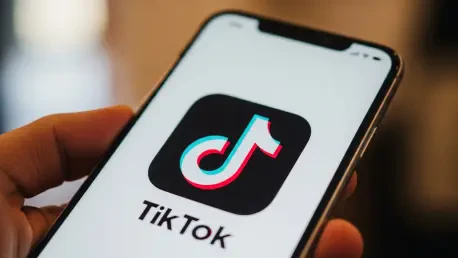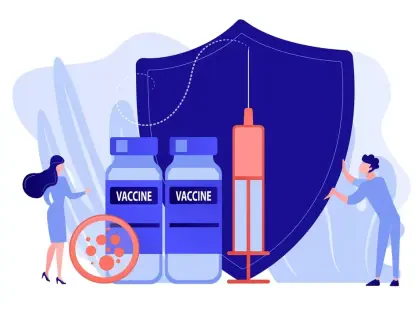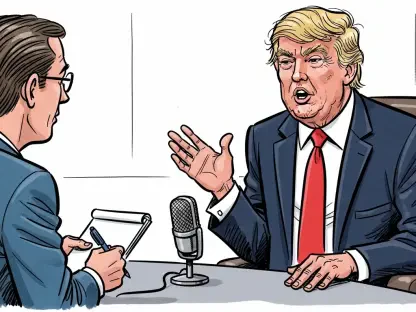As we dive into the complex world of international tech policy and U.S.-China relations, I’m thrilled to speak with Donald Gainsborough, a political savant and leader at the forefront of policy and legislation. As the head of Government Curated, Donald has unparalleled insight into the recent TikTok transfer agreement, a deal that could shape the future of one of the most popular apps in the United States. Today, we’ll explore the implications of this agreement, the challenges of securing approval from both U.S. and Chinese stakeholders, the national security concerns at play, and what this means for the app’s 170 million American users.
Can you give us a broad picture of what the TikTok transfer agreement means for the app’s future in the U.S.?
Absolutely. This agreement is a pivotal moment for TikTok, which has been in limbo for over 18 months due to concerns over its Chinese ownership by ByteDance. The deal essentially paves the way for TikTok’s U.S. operations to be transferred to a new entity with significant American control, addressing the mandates of the 2024 law that required ByteDance to divest its U.S. assets. It’s a step toward ensuring the app can continue operating here without the looming threat of a shutdown, while also tackling national security issues. I believe this could stabilize TikTok’s presence in the U.S. for the long haul, provided all parties stick to the agreed terms.
How significant was the meeting in Kuala Lumpur in securing Chinese approval for this deal?
The Kuala Lumpur meeting was a critical turning point. It provided a platform for U.S. officials to directly engage with Chinese counterparts and hash out the details needed to get Beijing’s sign-off. This wasn’t just a formality—China’s approval was a major hurdle given their initial reluctance to let go of control over such a globally influential app. The discussions there helped build a mutual understanding of how the transfer would work, and I think it signaled a willingness from both sides to find a pragmatic solution. Without that meeting, we’d likely still be at a deadlock.
What can you tell us about the timeline for this agreement as it moves forward?
We’re looking at a process that will unfold over the coming weeks and months. While I can’t pinpoint an exact date for final resolution, the executive order from President Trump has set a 120-day window to complete the transaction, with enforcement of the 2024 law delayed until January 20, 2026. This gives some breathing room, but there’s still urgency to meet key milestones like finalizing the structure of the new entity and ensuring all security protocols are in place. It’s a tight schedule for such a complex deal, but the framework is there to push it through.
How does this agreement address the national security concerns that prompted the 2024 law?
National security has been at the heart of this issue, primarily due to fears about data privacy and potential foreign influence through TikTok’s algorithm. The agreement tackles this by ensuring the algorithm will be retrained and monitored by U.S. security partners. The new joint venture will have full operational control over it, which is a significant shift from ByteDance’s previous oversight. This setup is designed to prevent any backdoor access or manipulation, reassuring lawmakers and the public that American user data and content curation are protected under U.S. jurisdiction.
Can you walk us through the structure of the new entity that will manage TikTok’s U.S. operations?
Certainly. The new entity overseeing TikTok in the U.S. will have a board composed of seven members, with six being American and only one appointed by ByteDance. This ensures a strong American majority in decision-making. Additionally, ByteDance’s ownership stake in TikTok U.S. will be under 20 percent, aligning with the legal requirements to limit foreign control. This structure is a deliberate move to balance the need for ByteDance’s technical input while prioritizing American oversight and compliance with the 2024 law.
What was the reasoning behind President Trump’s decision to delay enforcement of the 2024 law until January 2026?
The delay until January 20, 2026, was primarily about providing enough time to finalize this complex transaction without the immediate pressure of a shutdown deadline. The original January 2025 cutoff was looming, and rushing such a high-stakes deal could have led to oversights or incomplete security measures. The 120-day window within the executive order also offers a structured timeline to complete the transfer. I think it’s a pragmatic move to ensure all parties—U.S. investors, ByteDance, and security partners—can dot the i’s and cross the t’s without risking the app’s abrupt closure.
There’s been some concern from U.S. lawmakers about the licensing agreement for TikTok’s algorithm. How do you respond to those worries?
I understand the skepticism, especially given the algorithm’s role in TikTok’s success and the potential risks tied to any lingering foreign influence. However, the licensing agreement is structured with strict oversight by U.S. security partners to prevent misuse. We’re not just handing over the keys—there are robust mechanisms to monitor and control how the algorithm operates under the new joint venture. Addressing congressional concerns will involve transparency, regular updates, and demonstrating that these safeguards are effective. It’s about building trust through accountability.
What is your forecast for the future of U.S.-China tech collaborations in light of this TikTok deal?
Looking ahead, I think this deal could set a precedent for how the U.S. and China navigate tech collaborations amid geopolitical tensions. If executed well, it might show that pragmatic solutions are possible, even in highly sensitive areas like data security and content platforms. However, I expect continued friction as both nations grapple with protecting their interests—whether it’s the U.S. pushing for stricter controls or China safeguarding its tech giants. My forecast is cautiously optimistic: we could see more structured agreements like this, but only if trust and transparency remain central to the dialogue.









